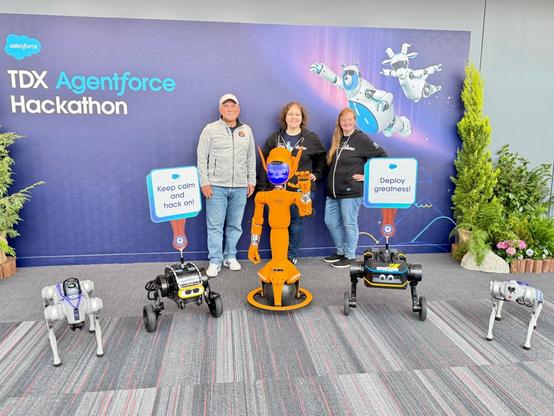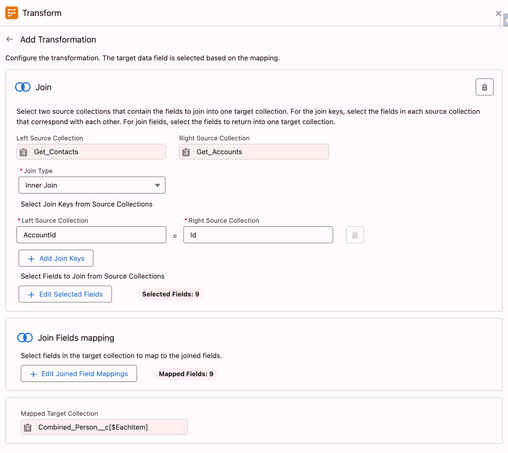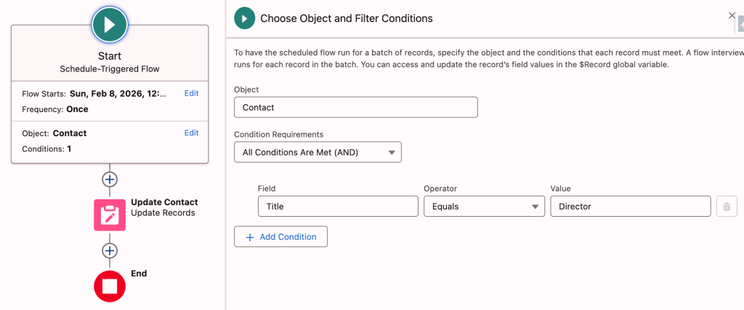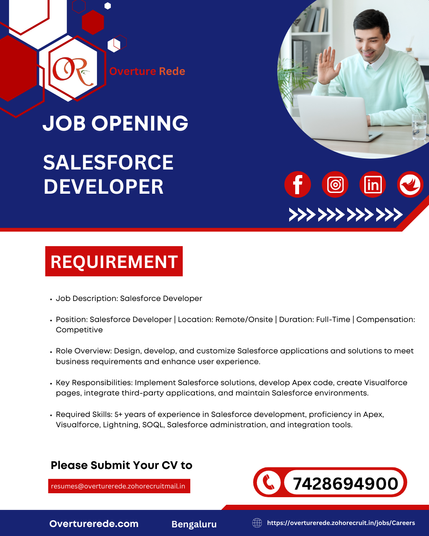Agentforce Hackathon TDX25: My Hackathon Tips
When Salesforce opened registration for TDX 2025 (TrailblazerDX), they also announced the Agentforce Hackathon, which was to be held before the main event. The event was free to attend and it came with a bunch of prizes including a grand prize of $100,000.
Hackathon
A hackathon is a fast-paced event, usually lasting from one to several days, where people collaborate intensively on technology projects. Participants—such as developers, designers, and product managers—team up to tackle challenges or create new solutions from scratch.
Key features of a hackathon include:
1. Collaboration: People from different backgrounds work in small teams to develop a proof-of-concept, prototype, or even a fully functioning product.
2. Innovation and Creativity: There’s usually a focus on rapid ideation and experimentation. This environment encourages participants to test out new ideas or use emerging technologies.
3. Time Constraint: A hackathon often runs over an intense, short period—like 24 or 48 hours—though some may last for several days. The time limit pushes teams to produce results quickly.
4. Competition or Challenge: Many hackathons incorporate prizes or judging criteria around best idea, best design, or most innovative project. This gamified element helps motivate participants.
5. Community and Learning: Hackathons also act as social and educational events. Newcomers can learn from more experienced participants and meet potential collaborators or employers.
Hackathons are hosted by a variety of organizations, from tech companies and startups to universities and nonprofits, each often targeting a specific theme (e.g., healthcare, finance, machine learning, social impact). They can serve as a way to spur creativity, recruit talent, or generate new ideas and products in a short period of time.
Salesforce Agentforce
Salesforce Agentforce is a digital platform that enables organizations to build and deploy autonomous AI agents across various business functions. These agents can perform tasks such as customer service, sales development, and marketing automation, operating 24/7 to enhance productivity and efficiency. Agentforce integrates seamlessly with existing Salesforce applications, allowing businesses to customize agents to their specific needs, thereby augmenting their workforce with AI-driven capabilities.
Agentforce Hackathon
For the Agentforce Hackathon you were asked put together a team of max 5 people. You could build your team before getting to the Hackathon, or pick your team there. Although initially it looked like all TDX participants could join, Salesforce later announced what type of participants will be allowed. International participants from many countries, recent Salesforce employees and Salesforce vendors were ineligible to participate in the event due to legal constraints.
The event started at 4:00 PM on Monday and continued until midnight that day. The teams came back the next day as early as 7:00 AM and worked until latest at 8:00 PM on Tuesday. Food, coffee, soda and snacks were provided. Everyone who submitted a survey at the end of the event received a t-shirt. There was a grand prize of $100,000 as well as more vertically focused smaller prizes like best use of Slack. The winners were announced on Wednesday during the keynote. Congrats to the winners.
My Hackathon Experience
Overall the event was simultaneously fun and exhausting. Most people arrived in San Francisco after a long travel, and they were also impacted by the timezone changes.
I did not have a team or an idea ready when I went there. I collaborated with Lynda Kane and Andrea Stratton, two people I know in the Salesforce ecosystem. Collaborating with different brilliant minds was one of the best parts of the experience.
The event required demo skills as you had to record and submit a 5 min long video along with the documentation at the end of the event.
I’m a builder at heart, and I was proud that we had a working solution by the end. That was a key goal for me. Additionally, the event gave me an opportunity to lock in and experiment with Salesforce Agentforce for 13-14 hours. It is a great way to learn the features hands on.
One of my teammates, Lynda, said, “Working with Andy and Andrea for the Hackathon was fun and a great collaborative experience. This was an excellent way to get hands-on with the tools and build on our skills. The way I need to write instructions for prompts and agents is finally starting to click for me.”
Collaboration was a key part of the hackathon, and Andrea Stratton, one of my teammates, found the hands-on challenge to be a valuable learning opportunity: “I appreciated getting to learn from other community members with different skillsets and backgrounds,” she said. “Having to work with Agentforce without a guided walkthrough that we get with Trailhead was a worthwhile challenge and learning experience.”
The Result
Our team successfully completed the Salesforce Agentforce TDX Hackathon. As Team Kudosforce, our solution looks at reviews submitted by customers and creates immediate feedback and actionable insights into Slack to expedite continuous improvement.
It was wonderful to work with Lynda Kane and Andrea Stratton at this event.
Watch the demo video below.
Tips for Hackathons
1. Since the time is very restricted, it helps to build a team before the event and align on working principles.
2. The idea is the most important part, so it would be helpful to discuss it before the event.
3. While it’s important to have an idea you like before Hackathon, you can not produce work and build the solution before the event. This is against the rules.
4. Review the submissions of the previous winners. This is public information. See what resonates with the judges.
5. I’d say a big visionary idea is more important than a practical use case that you can build 100% within the time provided. Some aspects of your solution can be mocked and you can communicate that. That is totally OK.
Conclusion
Participating in the Agentforce Hackathon at TDX 2025 was an unforgettable experience—intense, rewarding, and a fantastic way to push creative and technical limits. The event reinforced the power of collaboration, rapid ideation, and hands-on experimentation with new Salesforce technologies. Whether you’re a seasoned builder or a first-time hackathon participant, the key is to embrace the challenge, stay adaptable, and focus on crafting a compelling solution.
Now that we have Agentforce & Data Cloud dev orgs available, preparing for a hackathon has become much easier. If you’re considering joining a future event, check out the upcoming Agentforce Virtual Hackathon and get involved! With $140,000 in prizes, there are plenty of opportunities to win:
🏆 Overall Grand Prize – $50,000 in cash (1 winner)
🎖 Honorable Mention: Most Impactful – $20,000 in cash (1 winner)
💡 Best Use of Slack Prize – $25,000 in cash (1 winner)
🎨 Honorable Mention: Most Creative – $20,000 in cash (1 winner)
🎤 Honorable Mention: Best Demo Delivery – $20,000 in cash (1 winner)
🗳 People’s Choice (Public Voting) – $5,000 in cash (1 winner)
If you’re up for the challenge, start preparing now! Have questions or insights? Drop them in the comments!
Explore related content:
TDX 2025 News: Salesforce Agentforce 2dx and AgentExchange
How to Get Your AI-Powered Enhanced Developer Org with Agentforce and Data Cloud
New Agentforce Specialist Certification
#Agentforce #Hackathon #Salesforce #SalesforceAdmin #SalesforceDeveloper #TDX25 #TrailblazerDX









